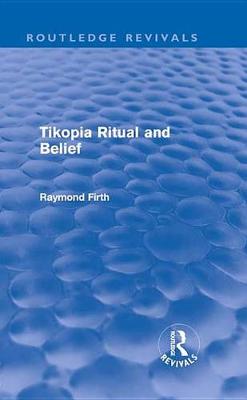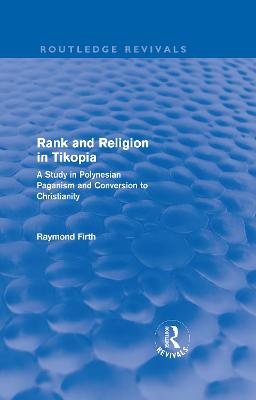Routledge Revivals
4 total works
First published in 1967, this book gives some of the fruits of the author's study of Tikopia ways of thought as the result of three field expeditions. Most Polynesians became Christians more than a century ago but Tikopia had a substantial pagan population until quite recent years. This book of essays describes rites and beliefs of a people who still maintained their traditional institutions remote from civilization. Studies of totemism, of magic and of beliefs in the fate of the soul in the afterworld, not only throw new light on Polynesian attitudes but also contribute some novel ideas to the interpretation of standard theoretical problems in social anthropology. Studies of rumour, suicide, and a new essay on spirit mediumship, also provide links between social anthropology and psychology. A general review based on the author's visit in 1966 describes the modern position after the adoption of Christianity.
Originally published in 1970, this book represents a unique study of beliefs and ritual practices in a pagan religion, and of the processes by which a transformation to Christianity took place.
Christianity came to the major islands of Polynesia nearly two centuries ago, and within a couple of generations, the traditional pagan religion had disappeared. Only a few remote islands such as Tikopia preserved their ancient cults.
Over eighty years ago, the author first observed and took part in these pagan rites, and on later visits he studied the change from paganism to Christian faith. Unique in its rich documentation, this book presents a systematic account of the traditional beliefs in gods and spirits and of the way in which these were fused with the social and political structure. The causes and dramatic results of the conversion to Christianity are then described, ending with an examination of the religious situation at the time of the book’s original publication.
The book is both a contribution to anthropology and a case study in religious history. It completes the major series of studies of Tikopia society for which the author is famous. It gives the first full account of a Polynesian religious system in a state of change.
First published in 1929, Raymond Firth’s original and insightful study offers an incredibly detailed account of the social and economic organisation of the Maori people before their contact with Western civilisation.
Bridging the gap between anthropology and economics, the work covers the class structure, land system, industry, methods of co-operative labour, exchange and distribution, and the psychological foundations of Maori society. This reissue will be welcomed by all students of anthropology and anyone interested the history of the Maori people.
This book first published in 1973 offers a broad survey of the study of symbolic ideas and behaviour.
The study of symbolism is popular nowadays and anthropologists have made substantial contributions to it. Raymond Firth has long been internationally known for his field research in the Solomons and Malaysia, and for his theoretical work on kinship, economics and religion. Here from a new angle, he has produced a broad survey of the study of symbolic ideas and behaviour.
Professor Firth examines definitions of symbol. He traces the history of scientific inquiry into the symbolism of religious cults, mythology and dreams back into the eighteenth century. He compares some modern approaches to symbolism in art, literature and philosophy with those in social anthropology. He then cites examples in anthropological treatment of symbolic material from cultures of varying sophistication. Finally he offers dispassionate analyses of symbols used in contemporary Western situations - from hair-styles to the use and abuse of national flags; from cults of Black Jesus to the Eucharistic rite. In all this Professor Firth combines social and political topicality with a scholarly and provocative theoretical inquiry.


